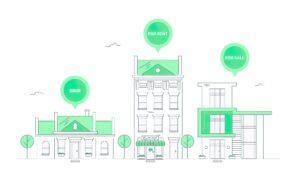Finance Lease
Finance leasing is a leasing arrangement where the lessee (the person company using the asset) enters into a long-term agreement with the lessor (the asset owner) to use the asset in exchange for regular payments. Unlike an operating lease, where the lessee only utilizes the asset for a short period and returns it at the end of the lease term, in finance leasing, the lessee is responsible for the maintenance, insurance, and other values associated with the asset, and has the option to purchase the asset at the end of the lease term for a predetermined amount.
Finance leasing is often used to acquire expensive equipment or other capital assets, such as aircraft, vehicles, or manufacturing machinery, without making a significant upfront capital investment. Instead, the lessee and, at the end of the lease term, the lessee can either return the asset to the lessor, purchase the asset for the predetermined amount, or enter into a new lease agreement.

One of the main advantages of finance leasing is that it allows the lessee to use an asset without taking on the entire financial risk of ownership, as the lessor typically retains ownership of the asset throughout the lease term. Additionally, finance leasing can provide tax benefits, as the lessee may be able to deduct lease payments as a business expense.
Finance leasing is a leasing arrangement where a company (the lessee) borrows an asset, such as machinery or equipment, from a finance company (the lessor) for a specified period in exchange for regular payments. At the end of the lease term, the lessee typically can purchase the asset at a pre-determined price or return it to the lessor.

Under a finance lease, the lessee assumes many of the risks and benefits of ownership, including the responsibility for maintenance and repairs, insurance, and taxes. This type of lease is often used when the lessee needs a particular asset for a specific project or period but wants to avoid tying up capital in purchasing the asset outright.
Under a finance lease, the lessee assumes many of the risks and benefits of ownership, including the responsibility for maintenance and repairs, insurance, and taxes. This type of lease is often used when the lessee needs a particular asset for a specific project or period but wants to avoid tying up capital in purchasing the asset outright.

Operating Lease
An operating lease is a lease agreement where a company leases an asset from a lessor for a certain period, typically shorter than the useful life of the asset. Operating leases are commonly used for vehicles, machinery, or office equipment but can also be used for buildings or other assets. Under an operating lease agreement, the lessor (the owner of the asset) is responsible for maintenance, repairs, and other costs associated with the asset. The lessee (the company leasing the asset) pays a rental fee to use the asset during the lease period but does not take ownership of the asset.
At the end of the lease period, the lessee can typically select to renew the lease, return the asset to the lessor, or purchase the asset at a predetermined price. Because the lessee does not take ownership of the asset, the lease payment is usually lower than the cost of purchasing the asset outright.

Operating leases can give companies flexibility, as they can use the asset for a specific period without committing to a long-term purchase. Additionally, operating leases may provide tax benefits, as lease payments can be deducted as an operating expense. Overall- An operating lease can be a flexible and cost-effective way for companies to acquire the assets they need without the long-term commitment and expense of ownership.
An operating lease is a lease agreement where a company or individual ( the lessee ) rents an asset from a lessor for a specific period, typically less than the asset’s useful life. Operating leases are commonly used for equipment and vehicles but can also include real estate.

Under an operating lease, the lessor retains asset ownership and is responsible for maintenance and repairs. The lessee pays for the use of the asset from the lease term but is not responsible for any residual value or disposal of the asset at the end of the lease.
Operating leases are often used when a company needs to use an asset for a specific period but wants to avoid incurring the cost of owning and maintaining the asset over its useful life. Operating leases can also provide tax benefits.
